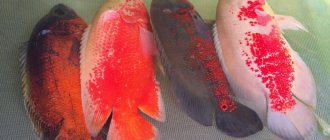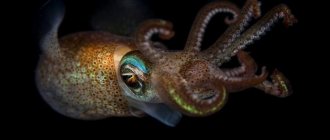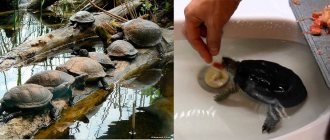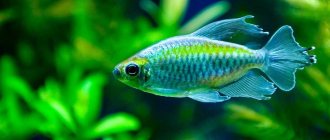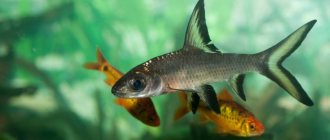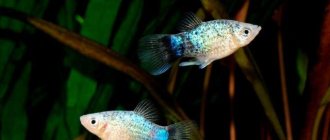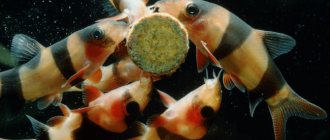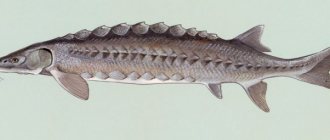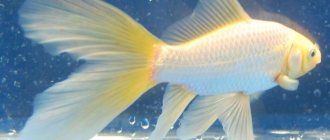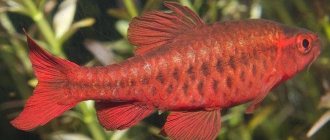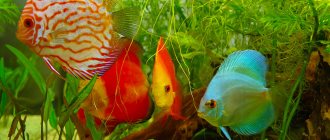The blue dolphin (lat. Cyrtocara moorii, English Blue Dolphin) is an unusual aquarium cichlid native to Lake Malawi in Africa. It is popular among cichlid enthusiasts, primarily for its coloring, as well as its unusual body shape with a large fatty bump.
These are quite large aquarium fish, and can reach a size of 25 cm or more. They are quite peaceful, but males are aggressive towards each other, and it is better to keep them in a harem, consisting of one male and three or four females.
Such a harem lives in its own territory, which it carefully guards only during spawning, remaining more tolerant at other times.
Keeping them is quite simple, provided that they live in a spacious aquarium, the water in it is stable and clean, and it is properly decorated.
It is best to design it in the form of a biotope, with sand as soil, a large number of stones and various shelters, and enough free space for swimming.
Description
— Advertising —
The species was first described by the Belgian-British zoologist and ichthyologist George Albert Boulenger. The fish live in sandy coastal areas at a depth of 3-15 meters. At maturity they become quite large, reaching almost 25 cm in length. The body of the cichlase is compact and elongated, and the muzzle is also quite elongated. With age, individuals develop a large hump on the head, which does not depend on gender.
Why is it called that?
The muzzle of the fish is similar to the muzzle of a dolphin, in honor of which these cichlids received the name “blue dolphin”.
General characteristics
The cichlid has a stocky, elongated body and a pointed muzzle. Individuals have a blue body color, with varying numbers of black spots on the fins and back, the location of which depends on the habitat. In adulthood, males and females develop a bulge on the head, which is called a cranial hump or cranial bump.
In proper conditions, individuals live for 10 years.
Content
— Advertising —
The blue dolphin is an aquarium fish that is suitable for both the beginner and the experienced cichlid hobbyist. The species needs a fairly large aquarium and frequent water changes. This is one of the more peaceful cichlids, so you can place it with friendly Malawi cichlids and some catfish.
Requirements for an aquarium
- An aquarium with a volume of at least 300 liters and a length of 150 centimeters is recommended.
- They live in both fresh and brackish water, but need good water movement, along with effective filtration.
- To make your fish feel at home, use a sandy substrate.
- Provide the aquarium with stones, slates, and driftwood that will serve as hiding places. But the main thing is to leave space for movement around the aquarium.
- These are digging fish, so they can uproot some plants.
- Choose moderate-to-normal lighting.
Water requirement
- Water temperature: 22.8-27.8oC.
- pH range: 7.2-8.8.
- Hardness: 10-18 dGH.
Monitor the parameters and cleanliness of the aquarium water, change 15-20% once a week. It is important to remember that the blue dolphin fish does not accept large amounts of organic matter in the water.
What to feed?
The blue dolphin fish is a predator in its natural environment that feeds on species such as shrimp and crustaceans. You can feed them live, fresh, frozen and pelleted food. They prefer high-protein foods, so feed them meat products such as worms, brine shrimp, mussels and daphnia.
Feeding
Cichlid blue dolphins are predators that feed on live food. They require a varied diet, protein and plant foods. Many aquarists feed them with ready-made food from the pet store. This is not enough for proper nutrition, so experts advise giving live food from time to time. The basis of the diet is brine shrimp and tubifex. Live food must be pre-treated to avoid infecting the dolphin with bacteria or harmful microorganisms.
The fish should be fed in moderation and in doses. Excess feed will lead to obesity.
Compatibility with other fish
Compatible
It will not be difficult for you to determine the compatibility of the blue dolphin fish with other species, since it is a relatively peaceful cichlid. It is best to keep one male with three or more females in an aquarium. They can be kept in the company of other cichlids, but remember that they will quickly become territorial slaves once the spawning season arrives. You can place dolphins with:
- frontoses
- synodontis catfish
- labidochromis
- aulonokarmī.
Not compatible
The blue dolphin, as an aquarium fish, has poor compatibility with fish of the Mbuna species (they come from Lake Malawi), since the latter are too aggressive.
Feed
For all fish from the cichlid group use:
The stores have a large selection of specialized food for cichlids.
- special dry food with spirulina;
- defrosted krill meat;
- gammarus;
- blanched vegetables (beans, pumpkin, cauliflower, bell peppers, green peas);
- greens (cucumber, nettle, dandelion, lettuce).
Usually, aquarists chop vegetables, herbs and seafood into a uniform mass and feed them to their pets little by little. It is recommended to store food in the freezer.
Fresh bloodworms, tubifex and minced meat are not given to fish!
Vegetable mixture can be given daily, dry food - every other day. The inhabitants of the aquarium must eat the food offered within half an hour.
The difference between a male and a female
You need to know that in the blue dolphin cichlid, the differences between the female and the male are insignificant, so you need to make an effort to find them.
They have the same coloring and both have a hump on their forehead. However, males can be larger in size and also have a more prominent hump on the head, but this takes several years. Males can also be brighter in color. The male can be distinguished from the female by indicative vertical stripes, the number of which varies from 4 to 7.
Breeding
Blue dolphins are polygamous by nature and form a matriarchal family. For blue dolphin fish, captive breeding is not an easy process. It is recommended to have one male and 3-6 females. To do this, buy 10-15 fry in advance and let them grow together, this is necessary to create a pair. Fish become sexually mature when they reach 12 centimeters in length.
Requirements for the spawning tank
- The spawning tank should be at least 150cm long and set up as above, with the addition of a few large flat rocks to create potential spawning sites.
- Water hardness: 5-20 dGH.
- pH 7.5-9.0
- Water temperature: 25-28oC.
- Provide adequate filtration and aeration system.
Breeding procedure
- The male will select a place for breeding: it will be a stone or other flat surface, and will also dig a hole for the eggs in the substrate.
- Next, the male will show his bright colors to the female until she swims after him to the designated place. There the female will lay eggs and the male will fertilize them.
- The woman will collect the eggs in her mouth for incubation. Care a brood of 20 to 100 fry for one to three weeks.
- The female dolphin is known to "spit out" her brood when she is stressed, so extra care should be taken if you decide to move the fish.
- By the time the female releases her brood, the blue dolphin fry are large enough to eat small shrimp, nauplii, and crushed flake food on their own. The female may continue to mouth the fry for several more weeks at night or when she senses danger.
Reproduction of blue dolphins
When the time comes for spawning, the male himself chooses a place to lay eggs. This could be the surface of a stone or a small hole in the ground. With its appearance (it becomes brighter), it attracts the female and lures her there, and she lays eggs (up to 90 eggs). After this, the male fertilizes the eggs. The female takes it for incubation and carries it for 2–3 weeks in the oral cavity.
When the female lays eggs, measures must be taken to ensure that nothing disturbs the fish. The aquarium should be in a quiet and calm place and, of course, except for the spawning pair, there should be no one in it - either the male will kill them, or the female will eat her eggs out of fear.
Artyom, aquarist
https://aquarium-vl.ru/forum/index.php?topic=317.0
In fact, the duration of incubation depends only on temperature conditions.
During spawning, the male protects his family. He will not allow other fish (even other male dolphins) near the eggs and fry. And the female becomes especially fearful. There were times when she swallowed all the eggs out of fear.
Since the fish cannot eat normally, some aquarists try to remove the eggs and hatch them in a separate container, but this is not always possible; the fish can simply swallow the eggs.
Natalya, experienced aquarist
https://aquarium-vl.ru/forum/index.php?topic=317.0
When the fry hatch, the female hides her babies in her mouth (at night or when they are scared).
They begin to feed the fry with live dust, which is specially sold for feeding young animals.
If other fish live in the aquarium along with the blue dolphin, then the “harem” needs to be transplanted. In the case where unpretentious fish live with Tsirtokar muri, you can remove them and leave the “harem” in their familiar environment. The couple will behave fearfully and warily.
During the first spawning, it is better not to count on rich offspring. For a successful addition to the dolphin family, there must be experience (both the owners of the aquarium and the fish themselves).
Almost always, an inexperienced female cannot withstand the forced hunger strike and “teasing” of other eating cichlids and swallows the eggs. Almost no one survives the first mark.
Leonov S.A., Volgograd
https://aquatropic.uz/forum/index.php?showtopic=1766
Diseases
Basically, the blue dolphin cichlid does not get sick if it is kept in proper conditions, namely clean water. It is important to maintain the correct diet and balance of nutrition to prevent obesity in individuals.
- The fish has a swollen abdomen, constipation and redness near the anus - you are probably feeding the wrong food. It is necessary to reconsider nutrition.
- The fish began to have convulsions, the color became less bright, there was no orientation in space - probably toxic elements from the water entered the animal’s body. Change the water immediately and provide the aquarium with a filter system.
- Mucus appeared on the body of the fish, their color became less bright, they became inactive - perhaps the cichilids were hypothermic. For treatment, increase the water temperature, improve air exchange, and provide food that is easy to digest.
Reviews
During the period of gestation, the female does not have the opportunity to eat fully. Sometimes aquarists remove the eggs from the fish’s mouth and hatch it in a separate spawning tank. But this does not always work out, since the female can swallow all the eggs out of fright. Alexandra, 62, Perm
If the female is inexperienced, she may not be able to withstand hunger and swallow future babies. Also often other females begin to tease her. As a result, the first brood dies. Leonid
You should not buy dry food by weight. In this case, it is almost impossible to control the quality and expiration dates of food. The food must be stored in a closed package, otherwise pathogenic organisms will begin to develop in it. I add food of plant origin. But most of the blue dolphin's daily diet consists of protein foods. Lyudmila Igorevna, Voronezh
Interesting Facts
- It was once believed that one of the main products in the diet of cyclids in an aquarium was meat, such as poultry or pork. Researchers have proven that it is the components of these types of meat that lead to organic disorders in organisms with cichlase.
- Synonymous names for the species: blue dolphin, haplochromis muri, cirtocara muri.
- Cichlids have one nostril on each side, while other fish have 2 pairs. To sense the “smells” in the water, they suck in the water and then push it back out.
